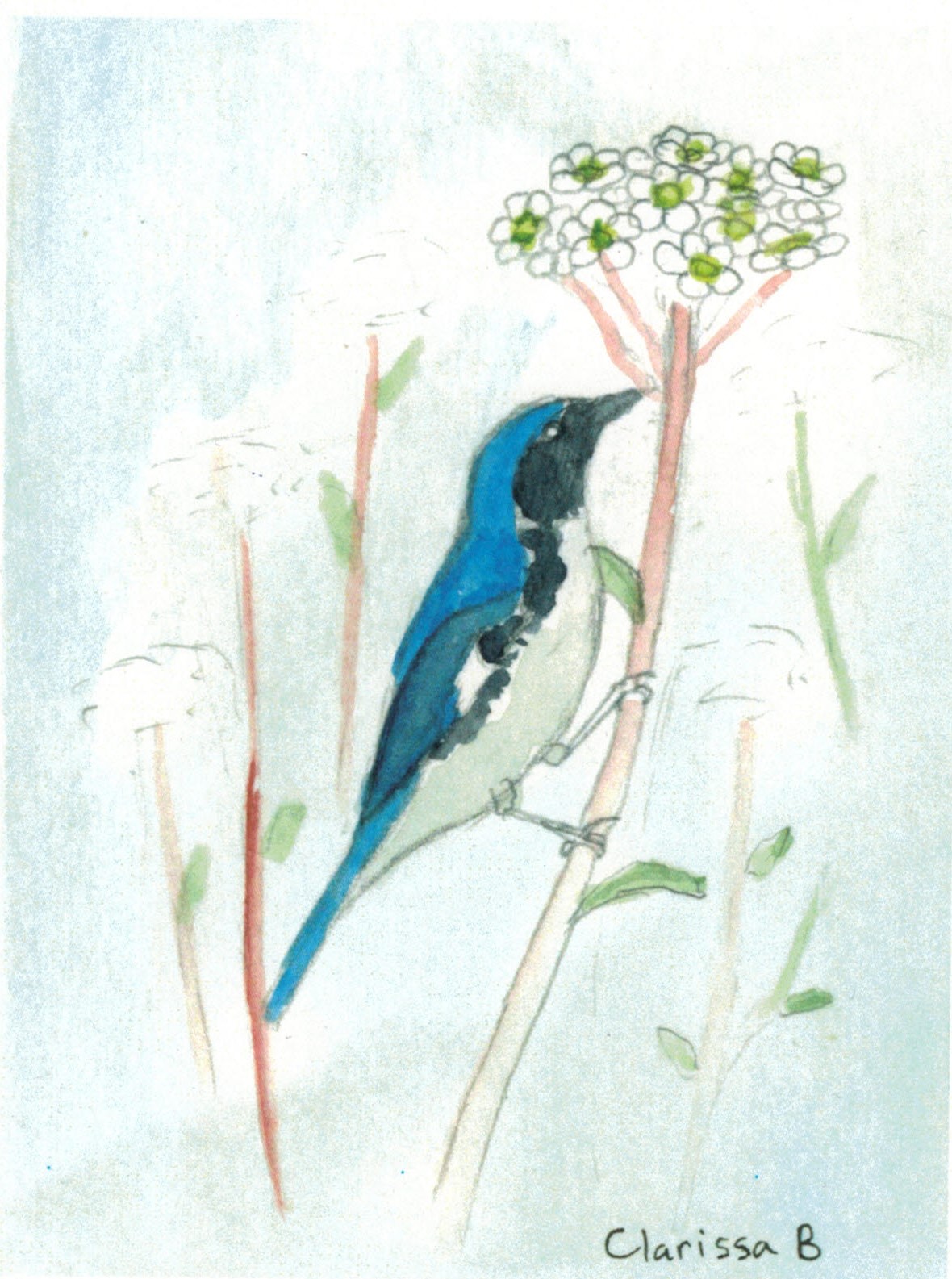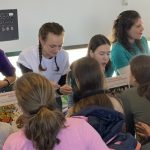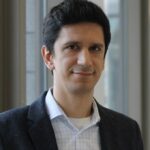And up we went, he [Virgilio] first, I [Dante] second, to
The point where I could see an opening.
And it was there I saw, when I looked through,
A sight more wonderful than anything –
We could see the stars again.
(Dante Alighieri, La Divina Commedia – Inferno, Canto 34)
How many times have you asked yourself whether your research has a broader impact on society? After all, we are using public money for the public good. Just like Dante, our goal is also to find an “opening” after weeks, months, years of intense work, and see the translation of our research into real-life impact, whether it is by influencing policy, helping diagnosis, or directly improving someone’s quality of life. Isn’t this what brings many of us to do research in the first place? So then, why is it so hard to quantify the impact of our scientific endeavours?
I believe the answer to this question is silos science – doing science as single individuals. Collaborative science is what accelerates scientific discovery, knowledge dissemination and societal impact. If Dante didn’t have his guide and best buddy, Virgilio, he would still be lost in the wild dark forest with no stars in sight.
I recently sat down with a few prominent neuroscientists who are members of both QBIN and the Transforming Autism Care Consortium (TACC) network. I wanted to get a sense of the state of the art in autism bio-imaging research and what the motivating factors and benefits are behind collaborative science and inter-network initiatives in Quebec. What I learned from my conversations with Prof. Mayada Elsabbagh, TACC’s co-director, and Profs. Boris Bernhardt and Mallar Chakravarty, is that as soon as we, scientists, come together and view science as a collective effort, we immediately create our own opening to see the stars.
Another key message that emerged from my conversations is the importance of fostering more dialogue between researchers, clinicians and the community at large. Community involvement is a pillar of both TACC and QBIN, so in addition to my conversations with scientists, I also reached out to a close family friend of mine (Mrs. B.), who is the mother of an autistic young adult. I wanted to get her take on what it is like to be a caregiver of someone with autism, and on what can be done, on our end, to improve the lives of autistic individuals.
What is autism and what does your program of research on autism look like?
Prof. Bernhardt: Autism is an umbrella term: it is a multi-faceted, highly prevalent condition that encompasses a multitude of genotypic and phenotypic manifestations – sensory abnormalities, impairments in social cognition, language and communication, among others. Some of its manifestations are shared with other neurodevelopmental conditions, making it rather complex and heterogeneous. Thanks to this overlap however, discovering the root causes and developmental pathways of autism will help us uncover the biological and genetic aspects of other shared conditions.
In my lab, we use Magnetic Resonance Imaging (MRI) to look at the structural and functional network architecture of the brain in individuals with typical and atypical brain development, including people with autism. MRI could be a nice intermediary phenotype to bridge research looking primarily at autism behavior and symptomatology, and research investigating its molecular risk factors. Ultimately, we are trying to understand the mechanisms that give rise to autism symptoms and identify biomarkers that can help in the clinic.
Prof. Chakravarty: Autism includes a variety of sub-types. We model autism as a dimension of disorder, as a spectrum, and in doing so we gain a much more comprehensive understanding of the condition. In my lab, we do both animal and human MRI research. We use the former to guide the latter.
Most of our work focuses on identifying multivariate neuroanatomical signatures of autism. In other words, we try to characterize individuals as part of one, two or three dimensions of anatomy and try to figure out how such neuroanatomical signatures may map on the different clinical dimensions we see. We started doing this type of work in mice as a first pass, and we saw dimensions in mice as well. So it is very clear that we should place individuals on some sort of dimension of disorder or dysfunction.
Prof. Elsabbagh: Autism is one of the areas that has gotten a lot of attention and where there is a lot of advocacy and unmet needs in the community. My research program aims at modeling the developmental pathways related to autism and to characterize what happens in later periods of life, especially in the transition towards adulthood, where we have a lot less information in the area of autism.
For example, we are tracking the development of autistic children, with whom we started working over a decade ago, and we continue to follow over time. We partner with a clinical program, which is hugely beneficial, because it allows us to come up with an integrated model of the condition. We also recently started a first clinical trial for parent support intervention across Canada, mainly for underserved families, which aims at supporting caregivers and helping them identify and meet their children’s needs around the time of diagnosis with autism.
Through your eyes, the eyes of a caregiver, how would you characterize autism and how does it impact the every-day life of your family?
“One of the biggest life lessons I learned through my daughter is that even the little things matter… When I stop and think about what she appreciates, it just makes me wonder why most of us strive for so much more”
Mrs. B.: There is no one-size-fits-all definition when it comes to autism. I have witnessed so many children and adults affected by autism, and I still can’t find someone who is like my daughter. Since she is a girl, this makes it even harder. Our lives are impacted by her, in that we tend to cater to her needs first. If not, she can spiral into feelings that can be difficult to manage. Even though she is 26 years old now, we rarely leave her at home on her own. It is almost a sense of still having a toddler in your house, you are always wondering where they are and what they are doing. My husband and I talk about how our retirement will look like and how it will always be the three of us in our senior years.
One of the biggest life lessons I learned through my daughter is that even the little things matter: a simple walk in the forest or a drive-thru Ice Capp at Tim Horton’s are enough to make my daughter happy. When I stop and think about what she appreciates, it just makes me wonder why most of us strive for so much more.
What are some of the challenges in studying such a complex condition like autism?
Profs. Bernhardt & Chakravarty: The way we conceptualize autism is ever evolving – we are still having high-level discussions about what the spectrum actually is. For the longest time, we have been examining genetic risk factors and transcriptomics linked to autism, and looked at how they change behavioral phenotypes. The challenge that we see over and over again, is that variants known to be causally associated with the emergence of autism affect the brain in completely different ways. So the question becomes: how do we best grasp such complexity?
Methodologically, we may benefit from multimodal multivariate investigations that integrate genetics, transcriptomics, brain anatomy and brain function. Exploratory analyses that encompass all of the aspects of autism may also guide hypothesis formulation and testing. We will never comprehend autism if we don’t come together. Collaborations are key to move forward in understanding autism: no one laboratory or research group has in fact the ability to run all these types of investigations at the same time.
“When you think of a research question and you talk about it with a clinician, someone that is closer to the day-to-day management of individuals on the spectrum, you learn very quickly whether your scientific question is actually relevant”
Relatedly, gaining insights from clinicians on autism may allow us to validate our theories and reassess or focus on certain aspects more than others. When you think of a research question and you talk about it with a clinician, someone that is closer to the day-to-day management of individuals on the spectrum, you learn very quickly whether your scientific question is actually relevant or whether you are using relevant phenotypes. This is the primary reason why we decided to join TACC.
As a co-director of TACC, could you tell me a bit about the network, its mission, where it all started?
Prof. Elsabbagh: It all started a few years ago when I, along with other colleagues, were invited to a meeting that was set up by some community foundations interested in autism. They pointed out how much great autism research there was in Quebec, yet it seemed like all our different research programs were operating in silos. We were not aware of what other scientists were doing. They thus left us with a challenge in that meeting, of coming up with an organizing framework for autism research.
We immediately started working with scientists all over Quebec and in a fairly rapid time, we developed the TACC network. Being able to do so, made us gain confidence and trust from those foundations that then became TACC partners. Since then, the network has become incredibly successful. We became recognized by FRQS as a provincial network for autism; we secured funding from several organizations and had success in fundraising; we recruited a large number of researchers as well as trainees to join our network; we developed a series of programs and scientific activities to advance research and integrative care in autism.
Our goal is to bring people together and do research that can be meaningfully and effectively used to improve the quality of life of people with autism and their families. Our impact is essentially defined by the impact of all our members collectively. Ultimately, we aim at creating sustained connections within the research community, and between the research community and the public.
Could you provide concrete examples of some of the initiatives put forward by TACC?
Prof. Elsabbagh: TACC has three main objectives: multi-site collaborative research, capacity building and community engagement. Quebec 1000 is an example of a large-scale initiative to advance multi-site collaborative research. It essentially builds on a very strong foundation of working with autistic people, their caregivers and their supportive communities. Our goal is to build research infrastructure in routine health care settings, to enable access to research by people who are at the same time accessing health care services. It is a relatively recent program that we launched and we are now actively inviting people to register. We are preparing a comprehensive protocol that includes several components – genetic, brain imaging, behavioral assessments – with the idea that participants, patients and their family members, will undergo these different assessments over time.
As per our second area of interest, in the last few years we have run a program called the Quebec Autism Research Training Program, where at any moment in time, over 40 fellows from extremely different areas spanning bench research to social sciences, work together to get a fully rounded experience with autism.
Finally, TACC has a big community-facing objective aimed at making research more effectively used in different sectors: health care, education, policy etc. We focus on creating a cross-learning experience between our researchers and different communities that traditionally don’t have a lot of interactions with research, to develop partnerships and collaborations, along with promoting awareness and inclusion about autism. For instance, we organized an event at the intersection between research, arts and community, the Autism Festival, where we brought together different artists to showcase their art and raise awareness about autism.
What are the biggest advantages of being a TACC member and how can TACC push the field of autism forward?
Profs. Bernhardt & Chakravarty: Being part of TACC has helped us learn from scientists who have more experience than us on autism, and has helped us gain a different perspective on the condition itself and learn what is clinically relevant and what isn’t. Progress in autism research will come from initiatives like TACC that aren’t purely academic, but rather directly involve the community we are studying. Taking a first hand approach on autism will definitely pave the path towards precision medicine, a critical step for such a multifaceted and heterogeneous condition like autism.
Given your personal experience, what do you think can be done, on our end, to improve the quality of life of individuals with autism?
Mrs. B.: What I find that is most lacking in our community are programs for adults with autism, especially for adults with some skills, like my daughter. These individuals rarely get a chance to become active society members because they lack confidence, and because employers/employees in the workforce don’t know how to assist with situations that may occur with adults with autism.
“The struggles are real and hard at times, both for us caregivers, and them, autistic individuals. But if we all come together and move forward together, we can really achieve so much more”
We are very fortunate that our daughter has become a recognizable fixture in our community: everyone knows her around here. She works at a dog daycare and creates her own art. One of the best programs our daughter was ever involved in was in high school and it is called “Best Buddies”. It is an initiative that teams up children with autism with typically developing students of their age. Our daughter is still friends with her best buddy, they have been friends for 13 years now. This is what the autistic community needs most! The struggles are real and hard at times, both for us caregivers, and them, autistic individuals. But if we all come together and move forward together, we can really achieve so much more.
Giulia Baracchini is a PhD student in neuroscience at the Montreal Neurological Institute at McGill University. Her research interests lie in understanding mechanisms of inter-regional communication in the brain and their behavioural relevance, particularly in the context of cognitive control. Specifically, she is investigating whether and how large-scale network architecture interacts with BOLD signal variability patterns, in healthy aging and preclinical Alzheimer's populations.









